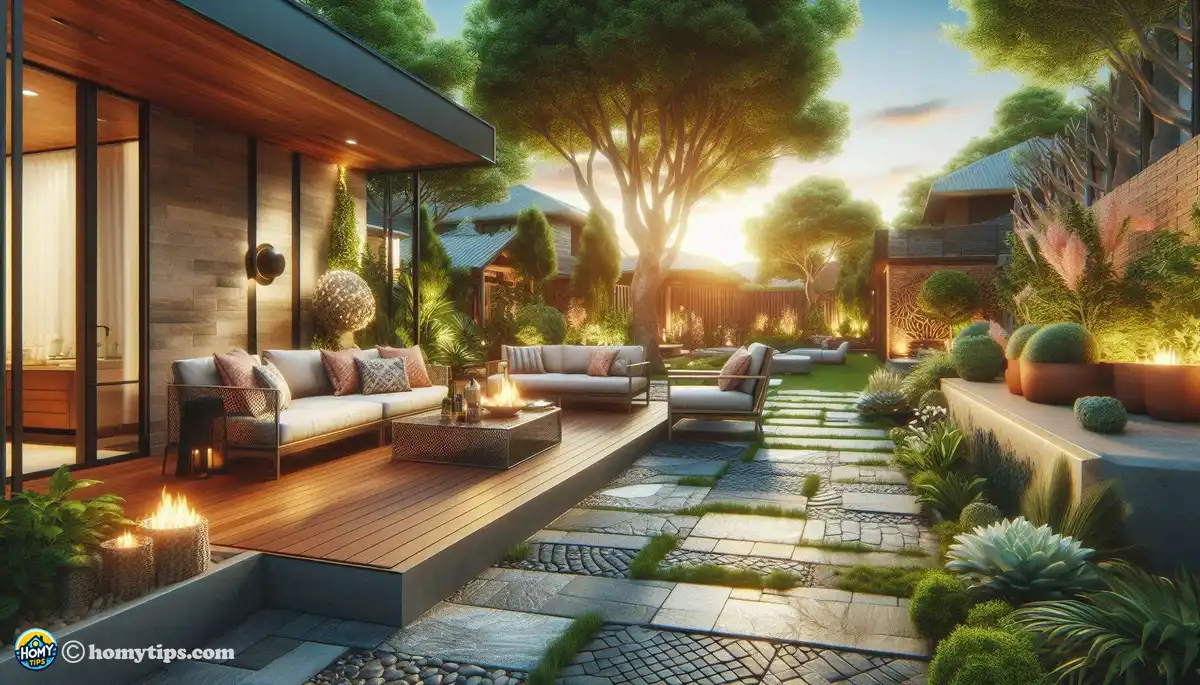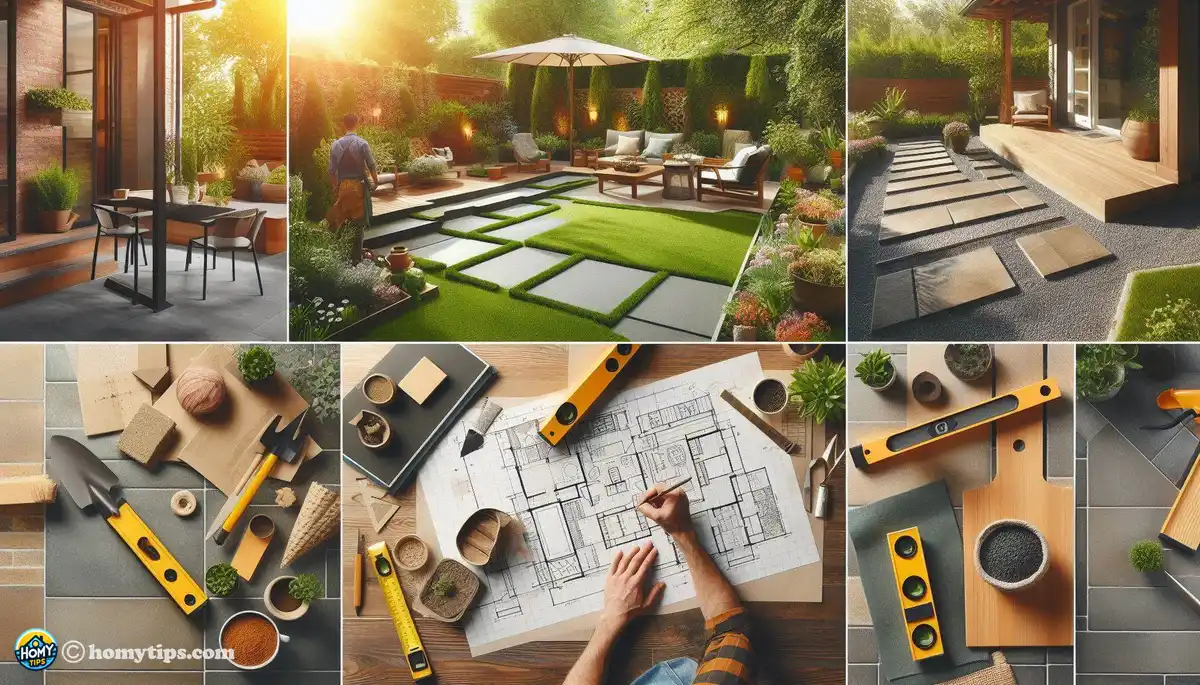
How to Choose the Right Materials for Your Home Patio Construction
Mateo Carmona - Nov 15, 2024 - 13 min read


It can be one of the most fulfilling home renovation activities you need to finish. It allows your outdoor living space to become a beautiful and enjoyable space to sit, have friends over, or an intimate night at home. To begin to develop your very own DIY patio plan is very time-consuming since much thinking must be applied in order to create it exactly how you would want it to be. Here is the guide for this purpose.
First, find an ideal place in your yard. Consider how much sunlight to shade, and how it is relative to your abode. Is there somewhere that attracts your attention? Make sure you have a region that you feel welcomed or fits the outdoor landscape with your dwelling. Think on how you will use this patio space. Do you see this as a big family BBQ, a time for romance, or you just need a quiet sanctuary to get lost in that book you've been reading. Each idea may send you to different locations.
Next, evaluate the land and access to the property. Is it flat, or will you have to grade? Make sure there are no obstructions such as large tree roots or drainage issues that might make your life difficult on the construction site. These are elements you want to catch early on to save time and frustration later.
Think of the view. A well-placed patio can provide a good view or even an attractive beautiful garden. If you really have a favorite spot gazing over a cup of coffee, then this must be the best location of your new patio.
Just research on the local zoning laws and regulations before you ever get down to starting your project. Places have different laws regarding patio size and where exactly one can put it in some places. There's just so much variety; some research has to be done. You might find yourself wasting all your precious time and money only to come to the realization that you've violated some of those codes.
Also, if you are in a neighborhood with an HOA, there may be certain rules to follow. Knowing these ahead of time will help the process go more smoothly and also avoid potential fines or needed changes later on.
Once you have a location, think about the design of your patio. There are many designs to choose from, from traditional to modern. What catches your eye? Think about the style of your home. A rustic stone patio will look out of place alongside a sleek, contemporary house.
Select your material. Some of the popular materials used include concrete, pavers, wood, and stone. All of these options have their pros and cons in terms of durability and maintenance, cost, and aesthetics. Think about what will fit well in your outdoor space and lifestyle. For example, if you have kids or pets, you want something durable that is easy to clean.
Think about how you want your patio to be used. Do you plan on adding furniture, a grill, maybe even a fire pit? These items can help drive the design and layout. Be sure to draw these ideas out on paper so that you can measure space so everything works well together.
A mood board can be very helpful in finalizing your design. Get images of patios, color schemes, and materials that inspire you. That visual representation can guide decisions and keep your vision on track. Use online resources or cut out pictures from magazines—whatever works for you.
Once you have accumulated a bunch of images, look for common themes or styles. Do you really love certain colors? Is more cozy and intimate or more open and airy? And understanding those preferences will be what helps make decisions become easier as you continue along with your project.
Share your mood board with the family or close friends in order to listen to them as well. Sometimes fresh eyes can also give useful ideas and polish your concept.
The best any DIY project should involve a well-planned budget. Building a patio is no exception. First of all, you have to know how much it would approximately cost you in terms of materials, labor if you will hire other people to do the work for you, and additional elements that will go into it like furniture or landscaping. Do remember that prices vary at different times, so researching beforehand will help you better on how much to spend.
Never forget to include the fees associated with permits or inspections in your budget, if applicable. The cost can really be added up at an unknown cost to your bottom line. A good budget lets you have a holistic overview of what you are spending on every detail of your project.
While you have a budget, always remember to set aside some contingency fund for unknown expenses. Stuff happens, like an unexpected hike in the cost of materials or needing more supplies. You want to set aside at least 10-15% of your budget for such purposes.
Be realistic in your budget. You can scale back on certain elements or spread it out over an extended period. Do not rush into a patio that does not meet your standards. That is okay if you take your time and do it right.
As you finalize your budget, consider what matters most to you with regard to your patio. You may be willing to spend a great deal of money on the surface but cut corners on the furniture. Knowing what you value most will help guide you when it matters.
You may wish to include in the plan certain DIY methods, which saves one much money. An example is building some furniture within house or preparing your own garden, which minimizes many of your expenses up to such a point where the addition of personality into the outdoor room would seem easier.
A well-prepared construction site is therefore a critical starting point before embarking on constructing. Sometimes the clearing the area free from debris and grass must also be achieved. Moreover, in such cases working on soil it may often necessitate to level some places or sometimes dig an area according to the blueprint made.
Mark the outline of your patio with stakes and string. This way, you will have a clear visual reference during this whole process of building. It is crucial to plan out how your finished patio will look; this will help prevent any nasty surprises later on.
Additionally, you can lay a gravel foundation if you will be using strong materials such as pavers or stone to ensure firmness. A foundation layer can prevent it from shifting over time, thus being more durable on your patio.
When you are finally ready with your site, it is now time to collect your tools and materials. Make a detailed list of everything that you'll need for your project: from the basic construction materials to the shovels, levels, and trowels.
If you are low-budget, you can rent those tools. This is something where most home improvement centers would be willing to lease large tools rather than trying to purchase them. End.
Finally, be systematic about your tools and materials. Keep all near the work site and use enough before you begin with the job. That reduces interference and keeps the process running smoothly.
The most exciting part now is to actually start building your patio. The construction process may depend on the design you go for, but generally speaking, it follows common processes. Begin by setting a good base: for pavers or bricks, this should mean setting up sand or gravel under the surface.
Once the base is prepared, lay the materials as planned. Take your time to ensure that each piece will be level and properly aligned. This will give an immense difference in how great your patio will look when it's done. When using concrete, make sure that the right mixture is applied and poured into its mold with sufficient drying time.
Reference back to your plans at all times not to lose track. A visual reference will help you concentrate and make sure that no major detail is missed during the construction process.
Now that you've gotten the basic patio structure done, you can add the finishing touches. This may include borders or edging that may help define a better space. Not only do such elements make the space look good; they are also for holding materials in place.
Now think about accessorizing your patio. Do you add outdoor furniture, planters, or lights? These add a lot to the feel of the space. Consider day/night feeling you'd like to have in this area.
Lastly, never forget to landscape around your patio. Planting flowers, shrubs, or even trees will revive your outdoor space and create a more aesthetic illusion. It is these finishing touches that will transform your patio into a true extension of your home.
All that work you have put into your patio means it will stay wonderful-looking for years with proper maintenance. Begin by creating a schedule for cleaning. Debris may need to be swept off, hosed down, or even pressure washed depending on the construction material.
You should also renew joint sand for stone or paver patios. This will make sure that the stones do not go out of place and that no weeds are able to grow. All these initial care could save you from major problems and keep your patio fresh.
Inspect your patio regularly for signs of wear or damage. Some of the minor problems may save you from more serious replacements later.
Think of the way changing seasons may be affecting your patio. This is especially during winter and in snowy regions. Clean all the snow off from your patio as it could cause destruction due to the weight, and do not use salt on your patio as it could damage certain materials.
Probably your patio landscaping will need refreshed for the spring and your patio refurbished and readied for your use again, clearing the winter debris and inspecting for wear.
Prepare your patio for the seasons to have this space look beautiful and function at any time.
This do-it-yourself patio is definitely one interesting and satisfying experience: you will be transforming that outdoor space into an oasis where you can unwind or enjoy the entertainment there, and from the selection process up to its maintenance phase, it is sure enough to pay off in due time.
Take some time to truly enjoy your new space once the work is done. If it's a sunny morning with a cup of coffee or having friends over to invite them over for barbecue on the patio, everything there will become a fond member of your home. End.